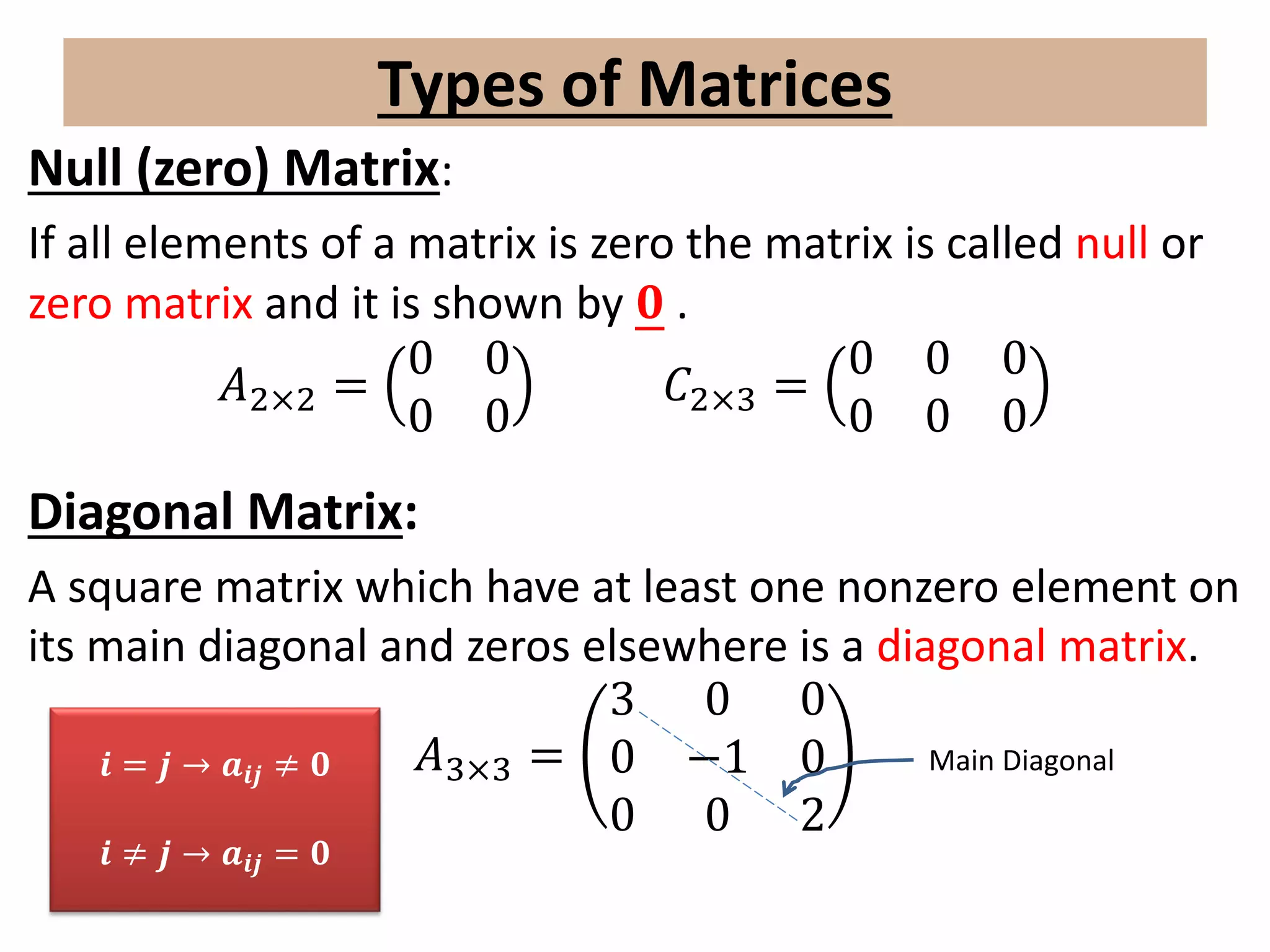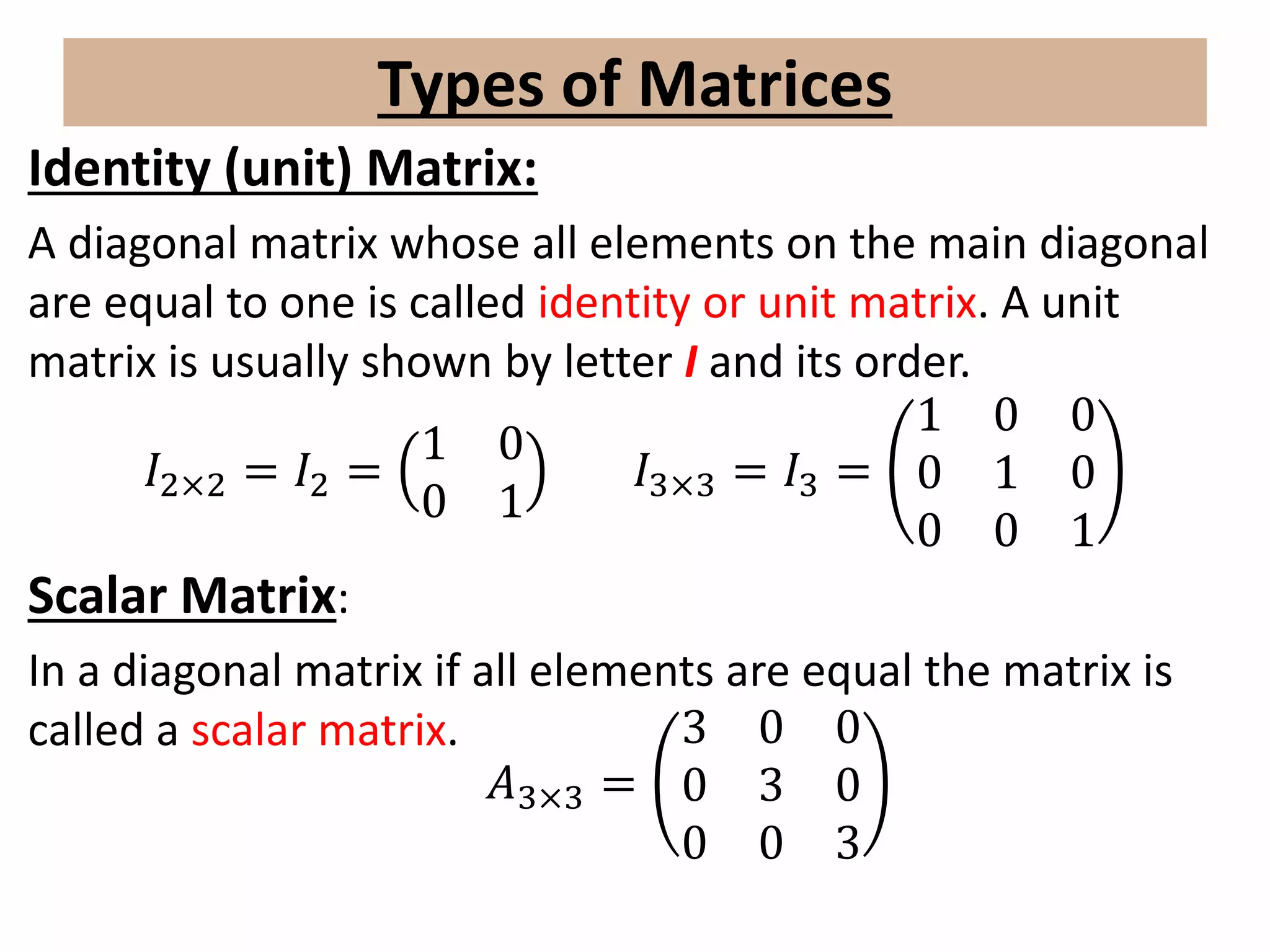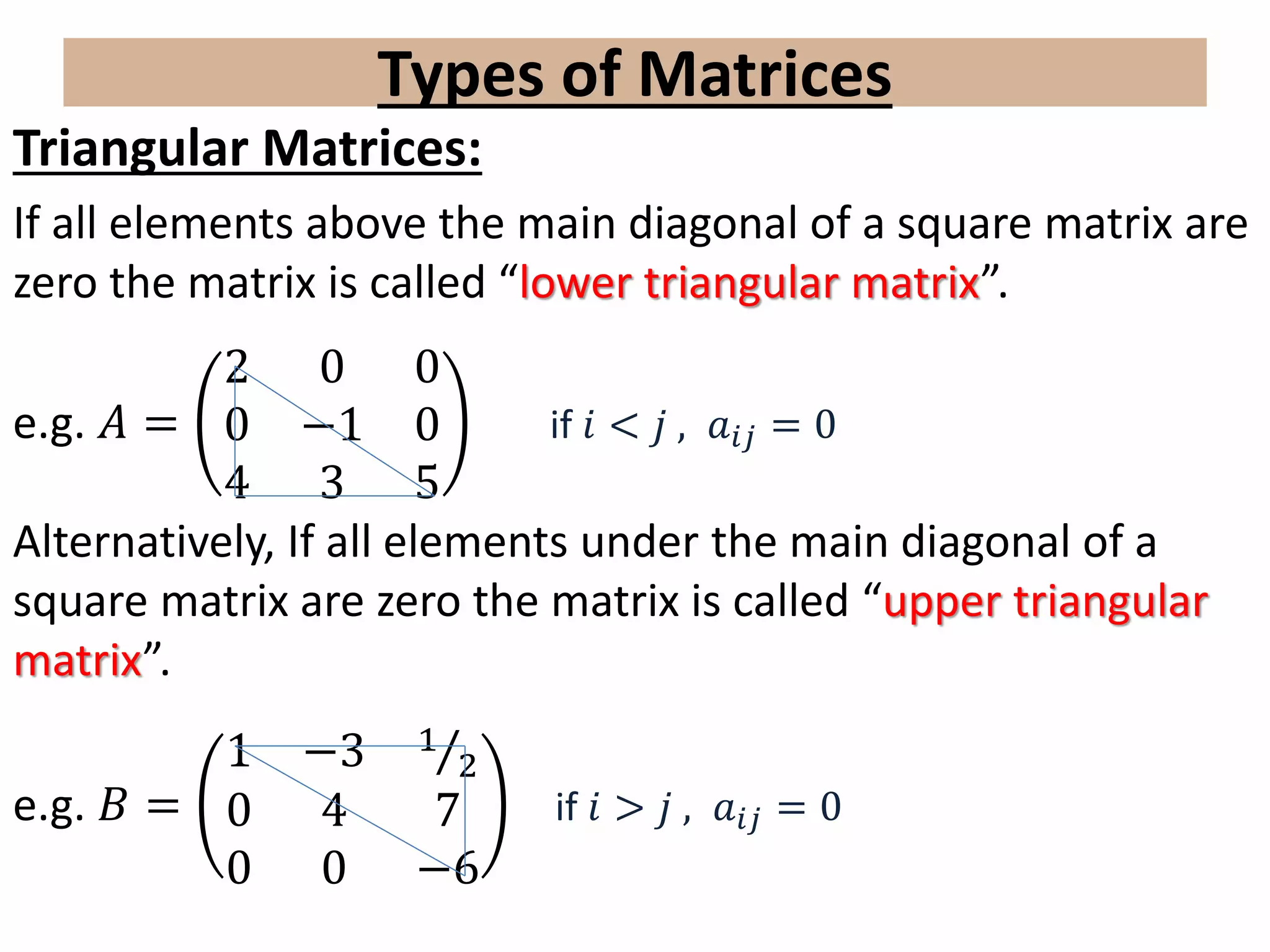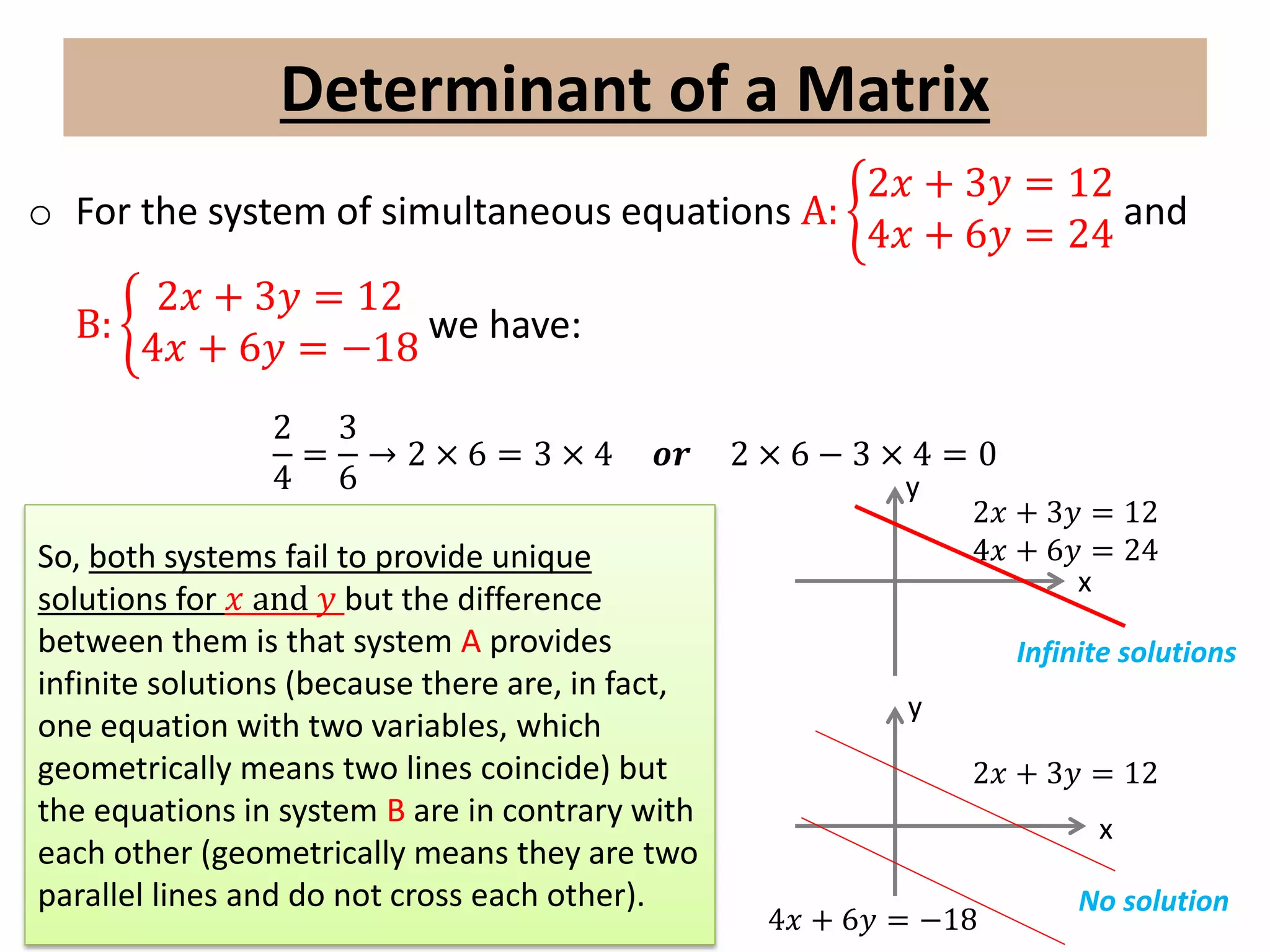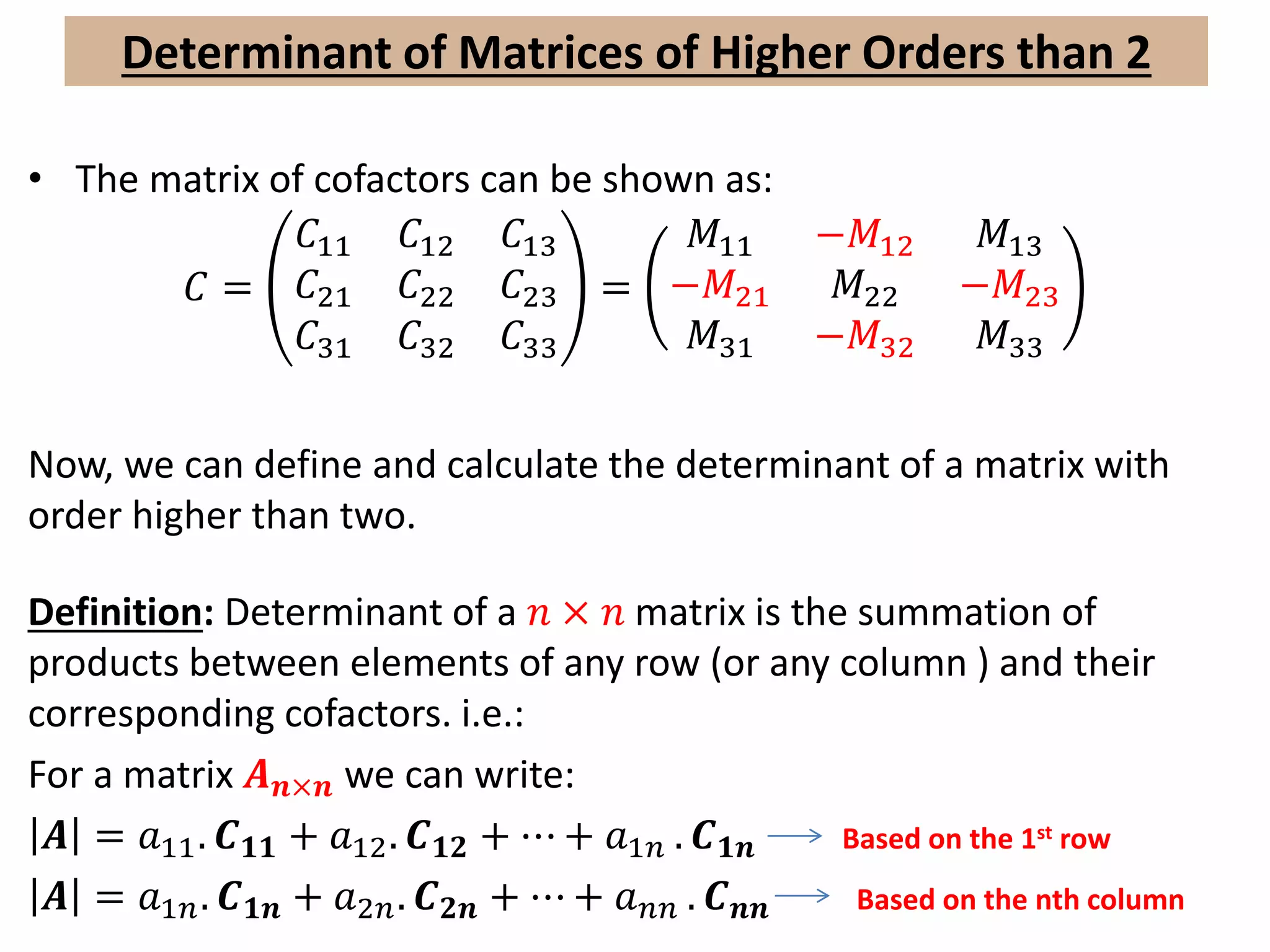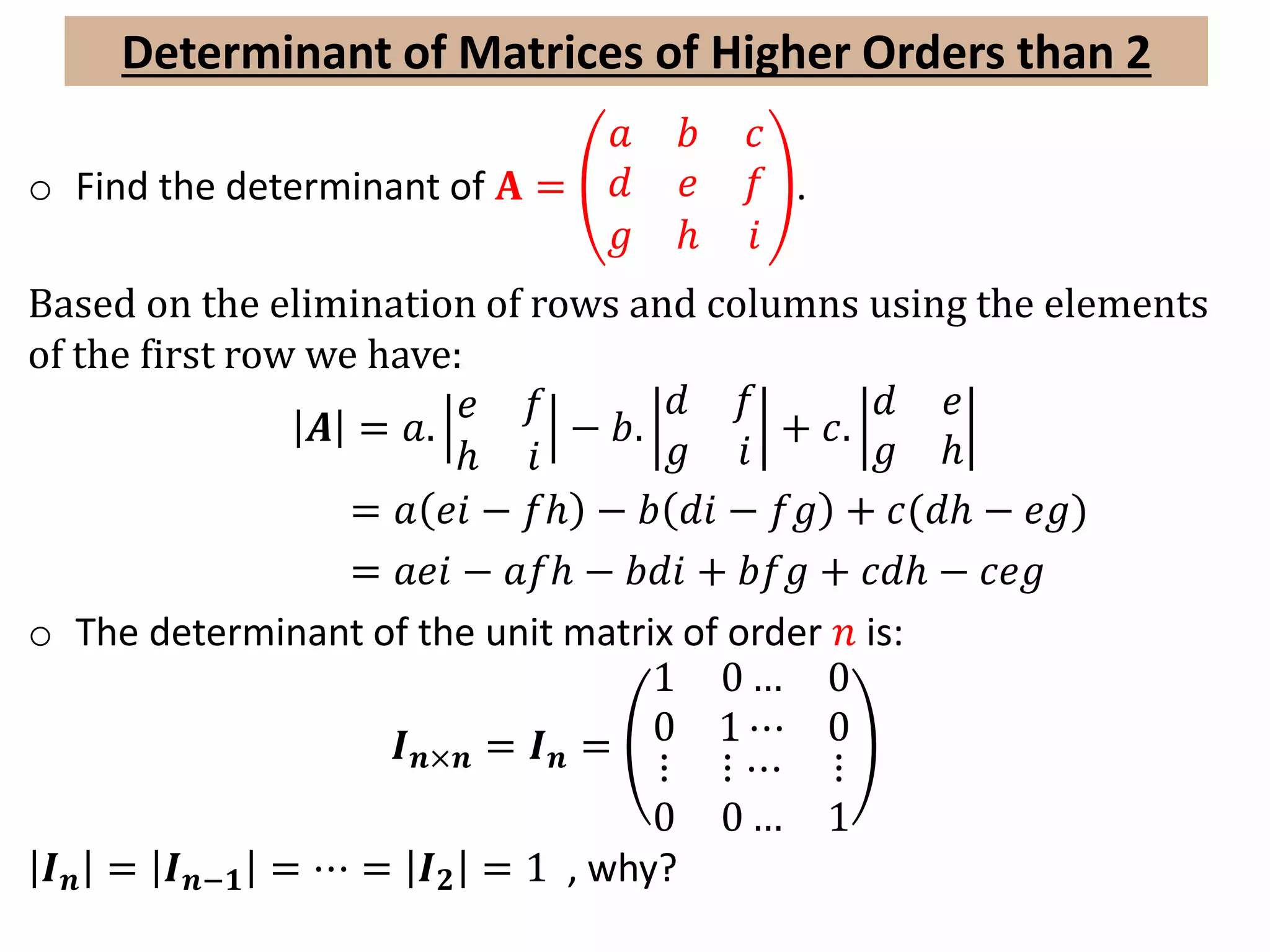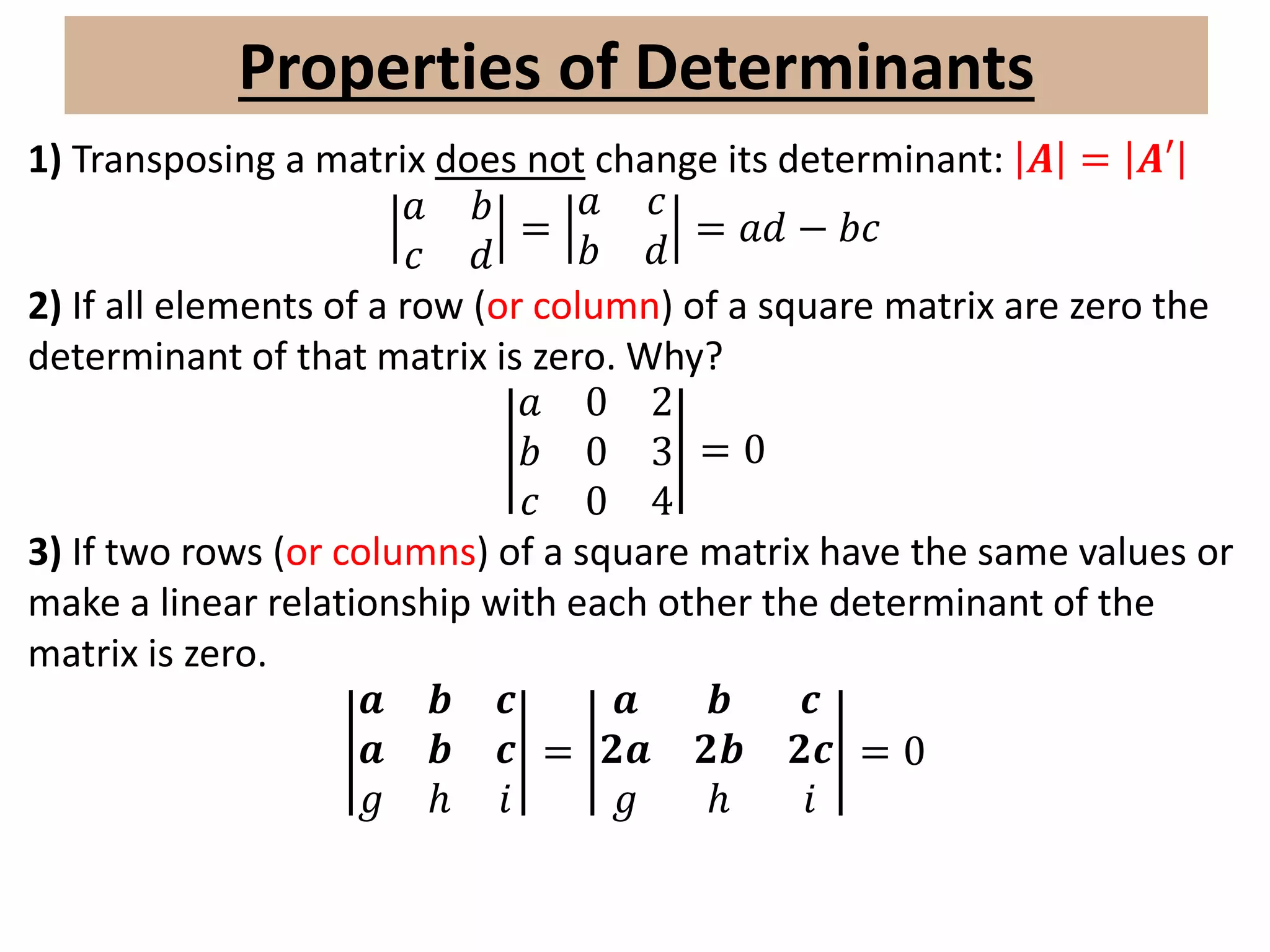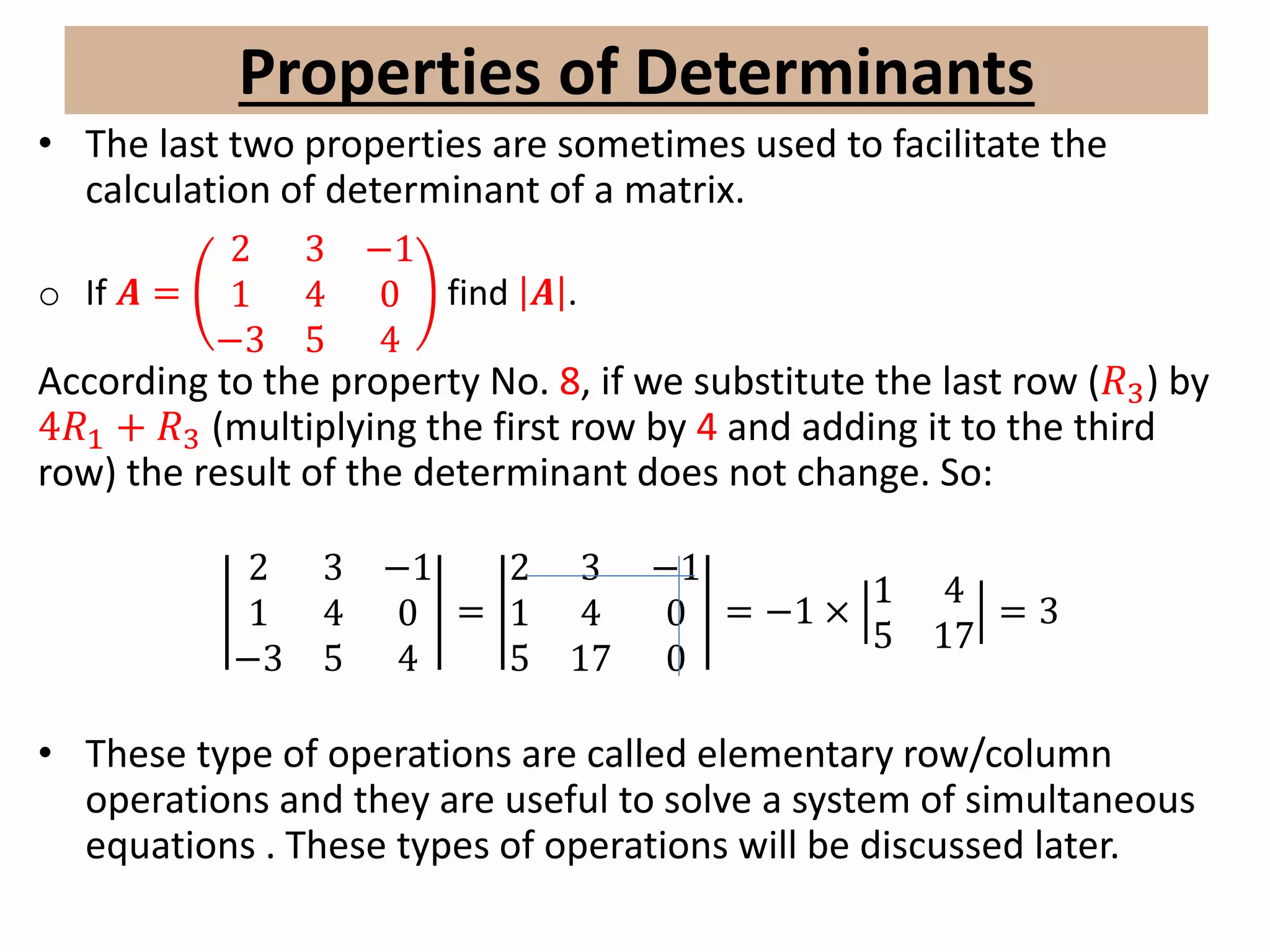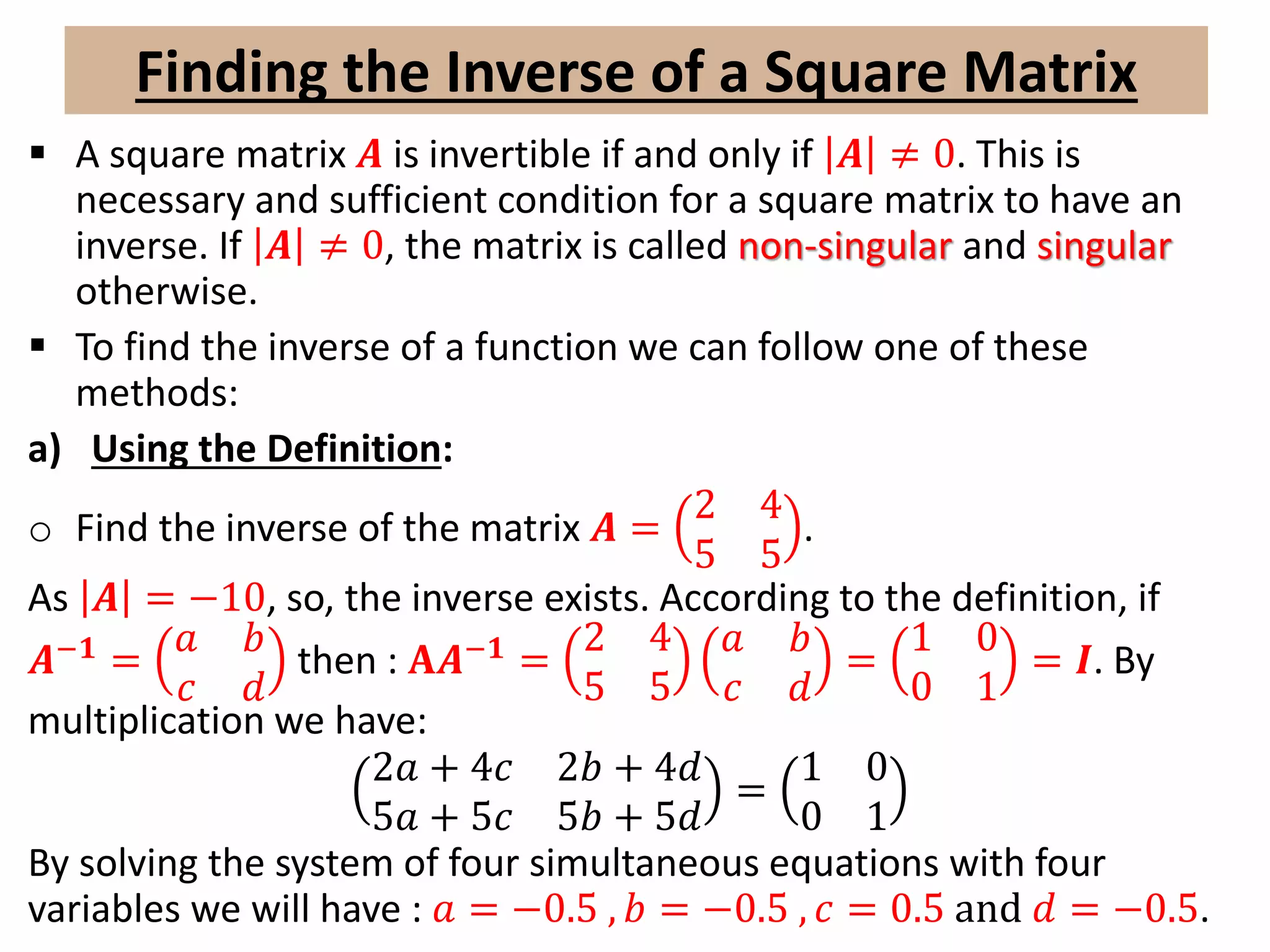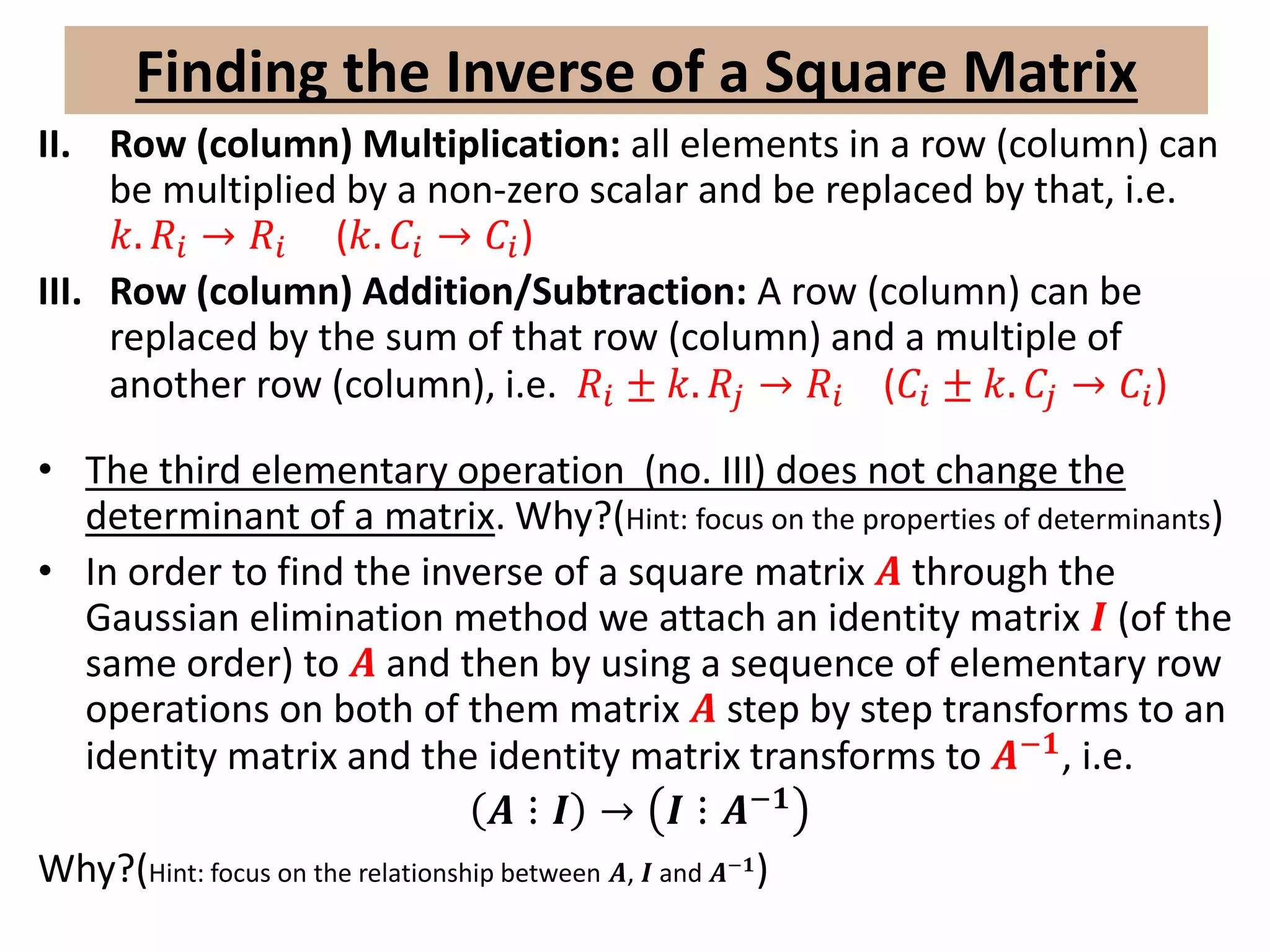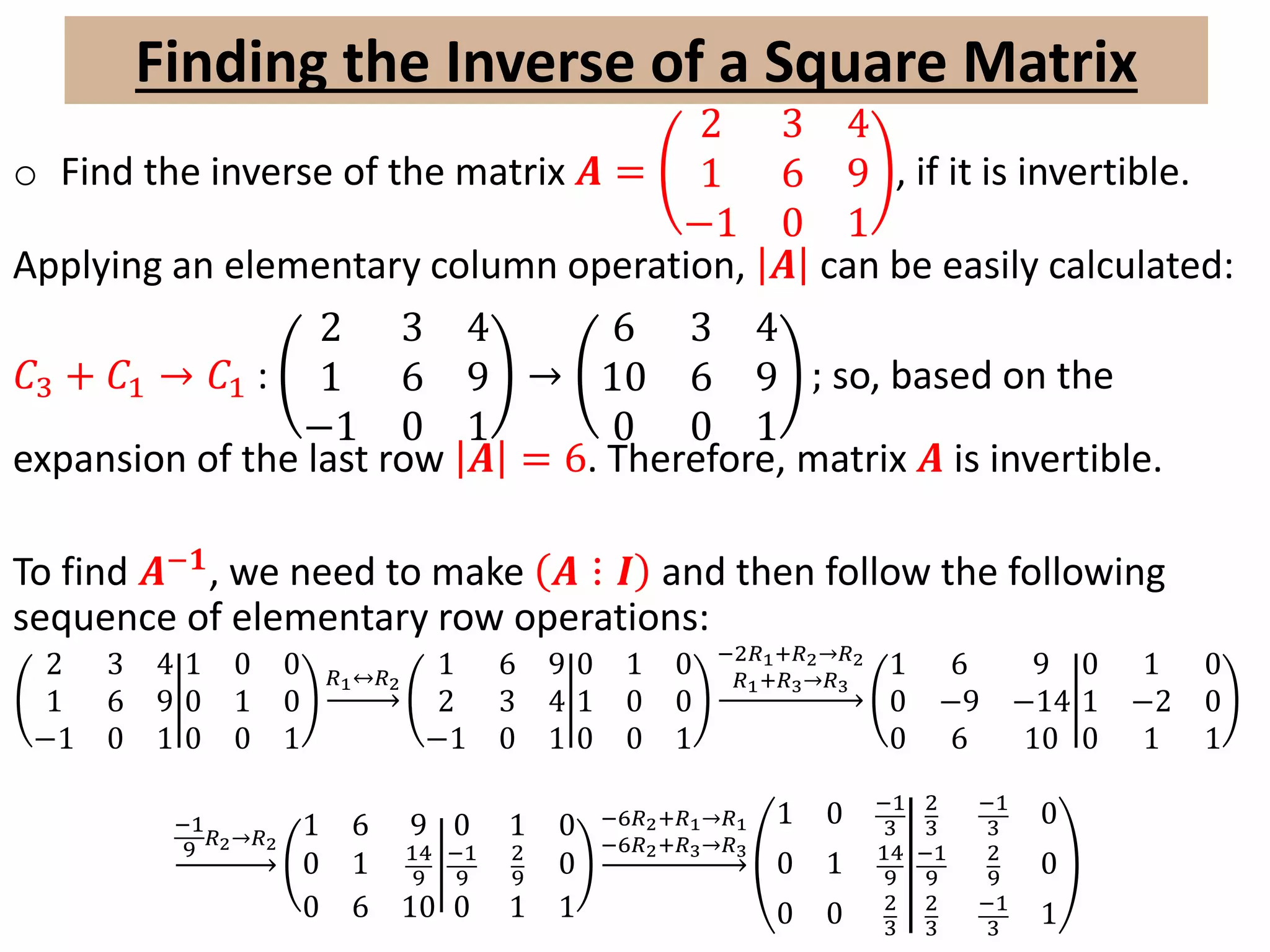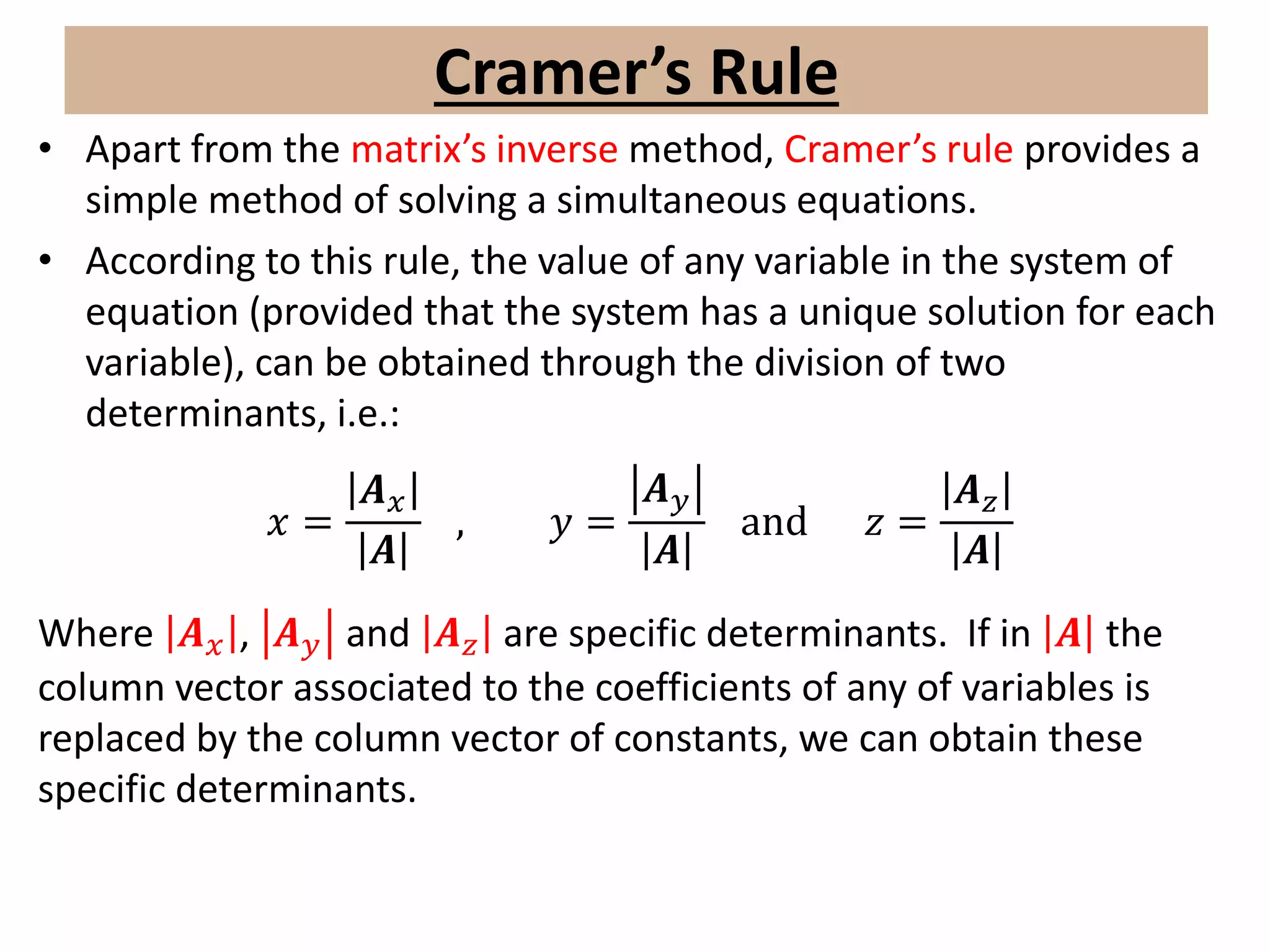This document provides an overview of matrix algebra concepts for business students. It defines key terms like matrix, order, types of matrices including identity, diagonal and triangular matrices, and matrix operations such as addition, subtraction and multiplication. It also explains determinants, which evaluate whether a system of linear equations has a unique solution. Determinants are calculated by taking the difference of products of diagonal elements of a square matrix. This document serves as a basic introduction and recap of matrix algebra.





